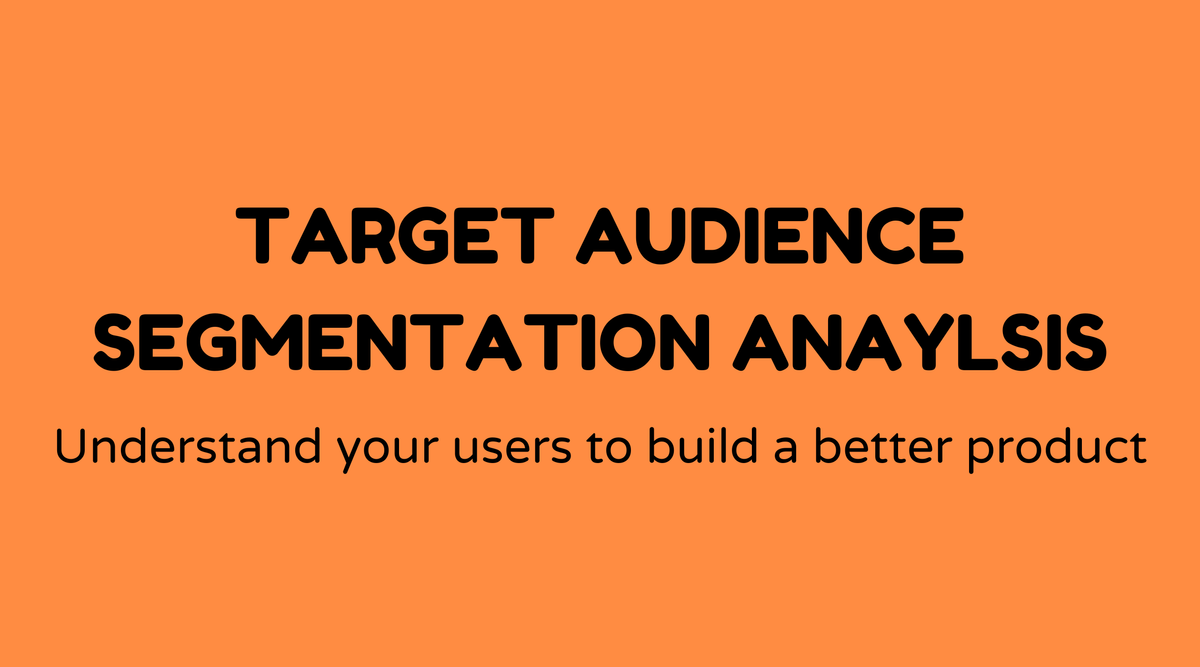Target audience segmentation analysis

Overview of Audience Segmentation Analysis
In today's data-driven landscape, understanding your customers goes beyond knowing their age or location. Audience segmentation analysis delves into customers' thoughts, behaviors, and decision-making processes. This invaluable tool enables businesses to customize their marketing strategies for specific groups, enhancing effectiveness and engagement. Whether you are a marketer, product manager, or business owner, this analysis is essential.
The Importance of Audience Segmentation Analysis
In competitive markets, casting a wide net and hoping for positive outcomes is no longer sufficient. By focusing on specific audience segments, you can meet their distinct needs and preferences. This targeted approach can greatly enhance conversion rates and customer satisfaction. Imagine addressing the specific concerns of each of your customer segments—it's not just smarter marketing; it's vital for sustainable growth.
- Enhanced Personalization: Customize your communications to align with the exact needs of your audience.
- Resource Optimization: Allocate your resources to the segments that yield the highest value.
- Better Product Development: Recognize which features hold the most importance for various groups.
What is Audience Segmentation Analysis?
Audience segmentation analysis involves breaking a broad consumer market into subgroups based on shared characteristics. This can include various aspects such as demographic, psychographic, geographic, and behavioral data. The objective is to identify segments that are sizable, reachable, and actionable.
Types of Segmentation:
- Demographic Segmentation: Factors like age, gender, and income.
- Geographic Segmentation: Grouping based on location.
- Psychographic Segmentation: Lifestyle, values, and personality traits.
- Behavioral Segmentation: Usage patterns, purchasing behavior, and brand interactions.
The benefit of segmentation lies in the precision with which companies can connect with their audience. Tailoring strategies to each segment fosters improved customer relationships and retention. If you wish to start, here’s a helpful YouTube video that explains it.
How to Conduct Audience Segmentation Analysis
Here’s a step-by-step guide to carrying out an audience segmentation analysis:
1. Data Collection
- Assemble data from diverse sources, including surveys, customer databases, and market research reports.
2. Identify Segmentation Criteria
- Decide which segmentation factors best suit your product or service based on known characteristics of your current customers.
3. Segment the Audience
- Employ statistical techniques or tools like SPSS or CRM systems to categorize your audience into distinct groups.
4. Profile the Segments
- Examine each segment to comprehend its needs, preferences, and behaviors. This may involve creating customer profiles.
5. Develop Strategies
- Adapt your marketing and product strategies to meet the requirements of each segment.
6. Monitor and Adjust
- Regularly assess the effectiveness of your segmentation strategy and make adjustments as necessary.
These steps provide a clear understanding of who your customers are and how to best connect with them.
Examples of Audience Segmentation Analysis
Here are a few illustrations of effective audience segmentation:
- Netflix: Offers personalized recommendations based on viewing patterns, creating diverse audience segments.
- Coca-Cola: Tailors flavor development and marketing strategies based on regional preferences.
- Nike: Caters to a variety of psychographic segments, from professional athletes to casual lifestyle consumers.
These brands effectively leverage segmentation strategies to strengthen their market presence.
FAQs
How often should audience segmentation analysis be conducted?
- Regularly updating your segmentation analysis, preferably annually, keeps your strategies relevant in evolving markets.
What tools can assist with segmentation analysis?
- CRM software, Google Analytics, and specialized tools like Market Research Survey software are highly effective.
What challenges may arise in segmentation analysis?
- Challenges include data privacy issues, accurately interpreting data, and ensuring segments are actionable.
Can small businesses benefit from segmentation analysis?
- Definitely! Even with limited resources, focusing on direct customer engagement based on segmentation can yield significant returns.
Is segmentation useful only for marketing?
- No, it's valuable in product development, customer service, and business strategy, enhancing overall operations.
Can segmentation enhance customer satisfaction?
- Yes, personalized experiences tailored to specific segments improve customer satisfaction and loyalty.



